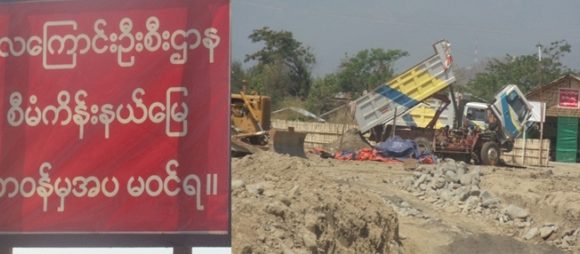Food Shortage Likely to Worsen As More Farmlands Destroyed

30 May 2011: Damage to farmlands and irrigation canals following heavy torrential rains that hit Chin State last October will likely result in significant reduction in local harvest this year and will further aggravate the ongoing food crisis in Burma’s most impoverished State.
A recent independent study conducted in three Townships in Chin State found that an estimated 1,500 acres of farmland on valleys along some major rivers and streams were lost either because parts of the agricultural fields were washed away by flood or the irrigation canals that supply water to the farms were completely destroyed.
The study looked at three townships in central Chin State: Surveyors visited 32 villages in Thantlang, 34 villages in Matupi and 28 villages in Hakha Townships – villages that have paddy fields on the valley along the Kaladan River and Thanghorva stream.
Worst hit among the 94 villages surveyed is Sate Village of Matupi Township, which has lost 80 acres of a total 120 acres of paddy field belonging to its villagers. With the ploughing season now upon them and damaged irrigation canals not having been fixed, villagers are unlikely to use vast areas of the remaining paddy fields this cultivating season.
One Sate villager explained: “We are worried by the looming food shortages. We depend on the paddy fields for our livelihood. About two-thirds of our paddy fields were washed away by flood last year. Only small portions of the fields were fixable.”
The finding corroborates the initial situational assessment by the UN Office for Coordination of Humanitarian Affairs (OCHA), which said in the immediate aftermath of the heavy rains in October 2010 that Matupi Township suffered the greatest loss of farmlands. The OCHA said an estimated 3539 was likely to suffer from food shortages as a direct result of loss of farmlands due to floods.
Heavy and continuous rains caused floods and landslides in several townships of Chin State in early October 2010. It damaged paddy fields, roads, bridges and irrigation systems. The Kaladan River rose to 20 feet on October 9, flooding about 90 houses and displacing nearly 300 people in Paletwa Township.
Continuous downpour was also blamed for several deaths, including one death in Thantlang Township when an elderly farmer was killed by flashfloods.






